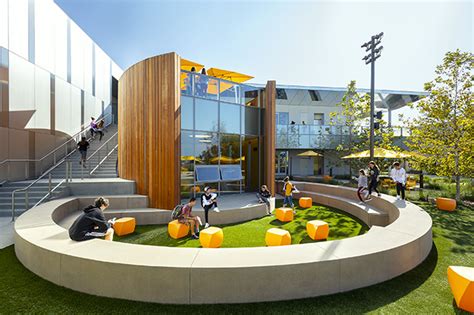University campuses are veritable microcosms, housing a multitude of spaces designed to cater to the diverse needs of students. From academic sanctuaries to social hubs, these places play a crucial role in shaping the university experience. This comprehensive guide provides an overview of the key places on a university campus, highlighting their functionalities and importance.

Academic Spaces
1. Libraries
Libraries are the intellectual heart of a university. They house vast collections of books, journals, and other resources that support student learning and research. Libraries offer quiet study spaces, access to technology, and research assistance from librarians. According to the Association of Research Libraries, over 116 million people visit academic libraries annually.
2. Lecture Halls and Classrooms
Lecture halls and classrooms are where formal instruction takes place. They vary in size and seating capacity, accommodating different types of courses and teaching methods. Some lecture halls are equipped with advanced technology, such as smart boards and live-streaming capabilities. Over 28 million students attend lectures at U.S. universities each year (National Center for Education Statistics).
3. Laboratories
Laboratories are specialized spaces for hands-on learning and research in fields such as science, engineering, and technology. They provide students with access to equipment, materials, and expert guidance. The American Chemical Society estimates that there are over 60,000 chemistry labs in U.S. colleges and universities.
4. Study Spaces
In addition to libraries and classrooms, universities offer designated study spaces for students to work independently or in groups. These spaces typically provide comfortable seating, desks, and Wi-Fi access. The University of California, Berkeley has created over 14,000 study spaces on campus to meet student demand.
Social Spaces
1. Student Unions
Student unions are the central gathering places on campus. They offer a wide range of amenities, including restaurants, coffee shops, bookstores, and meeting rooms. They host social events, student organizations, and other activities that foster community building. The University of Florida’s student union sees over 2 million visitors annually.
2. Recreation Centers
Recreation centers provide students with opportunities for physical activity and well-being. They typically offer fitness equipment, swimming pools, basketball courts, and other amenities. The University of Southern California’s recreation center has over 300,000 square feet of space dedicated to student recreation.
3. Residence Halls
Residence halls provide housing for students living on campus. They range from traditional dormitory-style rooms to private apartments. Residence halls offer a sense of community and convenience for students. According to the National Association of College and University Business Officers, over 2 million students live in on-campus housing in the United States.
4. Outdoor Spaces
Campuses typically have a variety of outdoor spaces, including parks, gardens, and courtyards. These spaces provide opportunities for relaxation, socializing, and recreation. The University of Virginia’s gardens and grounds span over 1,000 acres, creating a beautiful and tranquil environment for students.
Support Services Spaces
1. Counseling Centers
Counseling centers provide students with access to mental health services, including therapy, counseling, and crisis support. They offer a safe and confidential environment for students to address personal or academic challenges. The National Alliance on Mental Illness estimates that over 40% of college students experience mental health issues.
2. Health Centers
Health centers offer primary care services, including medical exams, health screenings, and vaccinations. They also provide information and resources on health and wellness. The University of Michigan’s health center serves over 500,000 students annually.
3. Career Centers
Career centers assist students with career exploration, job search, and interview preparation. They host career fairs, workshops, and individual counseling sessions. According to the National Association of Colleges and Employers, 90% of graduating college students use career services.
4. Disability Services
Disability services provide support and accommodations for students with disabilities. They offer adaptive technology, academic adjustments, and other services to ensure equal access to education. According to the U.S. Department of Education, over 1 million college students have a disability.
Tips and Tricks for Navigating Campus Spaces
- Familiarize yourself with a campus map.
- Attend campus tours and orientation programs.
- Make use of library resources and services.
- Explore different study spaces to find the most suitable.
- Join student organizations and activities to connect with others.
- Utilize support services such as counseling and health centers.
- Take advantage of outdoor spaces for relaxation and recreation.
Pros and Cons of Different Campus Spaces
Libraries
Pros:
* Vast collections of resources
* Quiet study spaces
* Research assistance
Cons:
* Can be crowded during peak times
* May not be convenient for late-night study
Lecture Halls and Classrooms
Pros:
* Accommodate different course sizes
* Equipped with advanced technology
* Provide access to instructors
Cons:
* Can be difficult to secure seats in popular courses
* May not provide sufficient opportunities for active learning
Laboratories
Pros:
* Hands-on learning and research
* Access to specialized equipment
* Expert guidance
Cons:
* Limited access and availability
* Can be hazardous if not used properly
Student Unions
Pros:
* Hub of social activity
* Offer a variety of amenities
* Foster community building
Cons:
* Can be noisy and crowded
* May not be conducive to studying
Recreation Centers
Pros:
* Promote physical activity and well-being
* Provide opportunities for stress relief
* Enhance social connections
Cons:
* Can be expensive to access
* May not always be convenient
Conclusion
Places in university are essential to creating a vibrant and supportive learning environment for students. From academic spaces to social hubs, each place serves a unique purpose and contributes to the overall student experience. By understanding the functionalities and importance of these spaces, students can make the most of their university experience and succeed both academically and personally.
